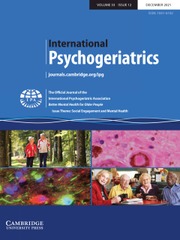Article contents
Sedative–hypnotic drug use among community-dwelling elderly in Taiwan
Published online by Cambridge University Press: 21 March 2018
Abstract
Sedative–hypnotic medication use has been related to severe adverse events and risks. This study investigated the prevalence of and characteristics associated with the use of sedatives and hypnotics among community-dwelling elderly persons aged 65 years and over in Taiwan.
A representative sample of community-dwelling adults was recruited. Clinical and sociodemographic data were collected for assessing physical, mental, and cognitive functioning and disorders. Sedatives and hypnotics use was determined via both self-reporting and prescription records. Logistic regression modeling was used to evaluate associations between sedative–hypnotic use and demographic and health status.
Among the 3,978 participants aged 65 years and over, the rate of sedative–hypnotic use was 19.7% (n = 785). 4.5% (n = 35) of users reported sedative–hypnotic use without a doctor's prescription. Several sociodemographic characteristics were positively associated with sedative and hypnotic use, including older age, female gender, higher education level, married status, unemployment, and current alcohol consumption. Comorbid chronic and cardiovascular diseases, mental illness, depression, pain, and sleep problems also increased the likelihood of sedative–hypnotic use.
This study is one of the largest pioneer studies to date to survey sedatives–hypnotics use among community-dwelling elderly. One in five community-dwelling older adults reported sedative–hypnotic drugs use in Taiwan, and about 5% of sedative and/or hypnotics usage was without a doctor's prescription. Findings could be helpful for drug-use safety interventions to identify target geriatric patients who are in general at higher risk of downstream harm associated with sedative–hypnotic use in geriatric patients.
- Type
- Original Research Article
- Information
- International Psychogeriatrics , Volume 30 , Issue 7: Issue Theme: Benzodiazepines and Hypnotics , July 2018 , pp. 957 - 965
- Copyright
- Copyright © International Psychogeriatric Association 2018
Footnotes
These authors contributed equally to this work.
References
- 8
- Cited by


